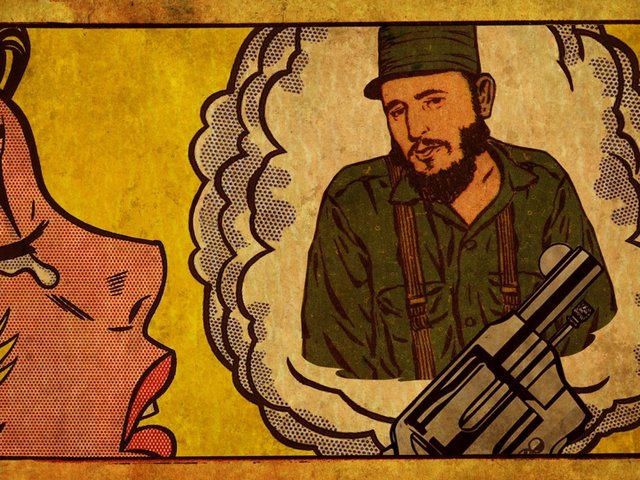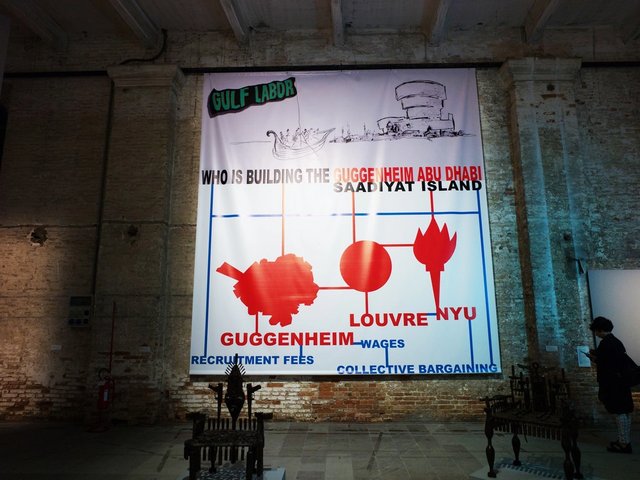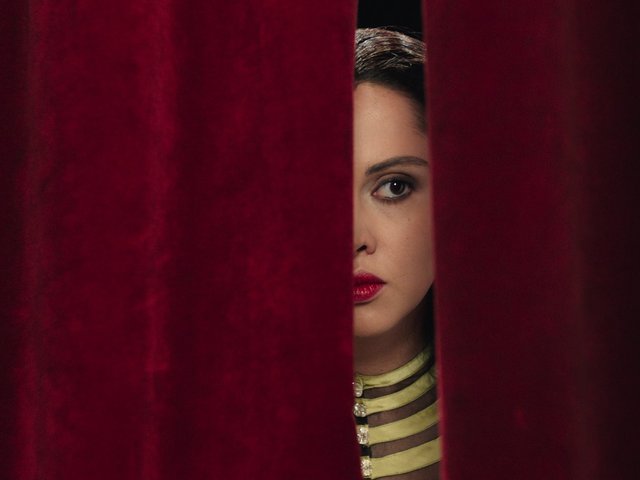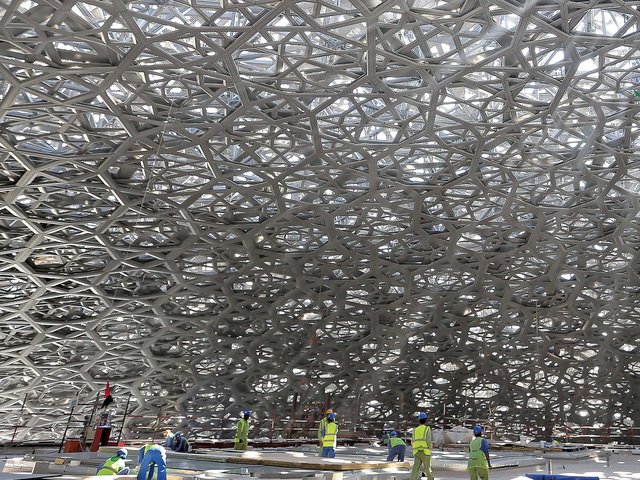Filmed over 11 days in a migrant workers’ compound in Sharjah, the French-Armenian artist Melik Ohanian’s DAYS, I See what I Saw and what I will See, was originally commissioned for the tenth edition of the Sharjah Biennial in 2011. Not shown during the biennial, the conceptual film is now part of the foundation’s collection.
The piece can be seen in Unlimited at Art Basel, presented by the Paris-based Galerie Chantal Crousel (U5). It records the daily life of workers in one of the emirate’s many purpose-built villages that house the builders, painters and other labourers employed in its booming construction industry. Each day, Ohanian and his five-strong crew built a 100m stretch of tracks, along which a camera would travel filming one continuous four-minute shot, once during the day and once at night. Each day, the artist’s team would pick up where it left off and the resulting footage—spliced together, dated and time-stamped—shows more than a kilometre of the compound in a 42-minute-long video work. The footage—one showing the afternoon, the other after dark in the village—is projected on to a double-sided wall.
The film starts off outside the China Labour Camp in Sajaa, Sharjah, and it takes three days before the camera enters the workers’ living areas. Ohanian says that it was difficult to gain access to the site, which is unsurprising given the controversy that has surrounded living conditions at such communities and the rights of the workers who build the high-profile cultural and commercial developments across the United Arab Emirates as well as in nearby Qatar. But once access was secured, Ohanian seems to have been given some freedom, his movement through the camp unobstructed, the depiction of the workers’ quarters uncensored. The work was shown in Sharjah in 2012.
From curiosity to acceptance Teams of workers dressed in blue coveralls return from their shifts at 9pm and go about their daily routines: washing themselves at outdoor sinks, their clothes hanging on makeshift lines and refuse collecting in piles along the walls. As the days progress, the workers’ attitudes towards the camera shift from strange curiosity to familiar acceptance. Ohanian says that, as the camp residents saw him and his team building the tracks and shooting, day in and day out, a level of understanding developed: “They realised we were doing a lot of work, too.”
He stresses that this is not a documentary film or a political statement but a conceptual work that aims to find a “balance between the subject and the way of recording it”. The compelling work suggests a certain sympathy for the workers, however; Ohanian tell us that it is “shocking that kind of situation still exists”. The UAE and Qatar are under growing international pressure to improve workers’ conditions and increase protection against exploitation. Workers building the Louvre Abu Dhabi on Saadiyat Island are now housed in a purpose-built complex, which has been inspected by directors of the Louvre and Solomon R. Guggenheim Foundation, among others.
In Qatar, which has been heavily criticised ahead of the 2022 World Cup, there are signs of change, too. The Economist magazine recently reported that its minister of labour and social affairs, Abdullah bin Saleh al-Khulaifi, is “90% hopeful” that the current kafala system—under which workers from countries including India, Pakistan and Nepal are sponsored by contractors who reportedly take advantage of them—will be replaced by the end of the year.





